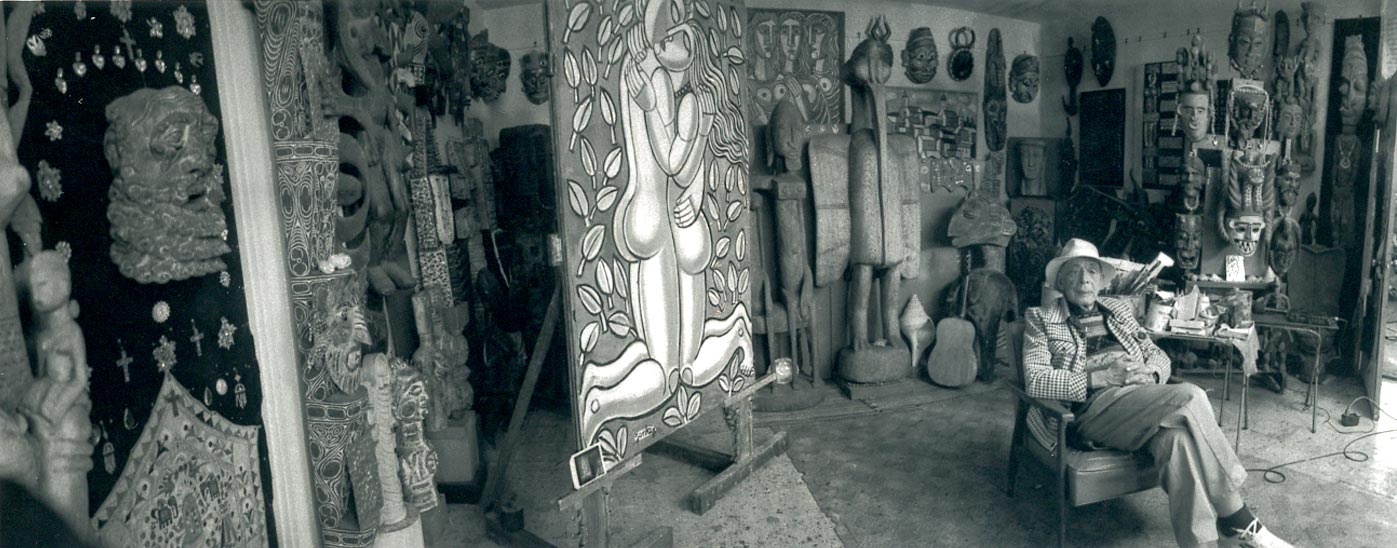Tibor Jankay was a unique visionary artist known for his figurative abstract paintings and his more than 27 years as a professor and the Chairman of the Arts Department at George Pepperdine University in Malibu, California. He was born to a Jewish family of six in Békéscsaba, Hungary on March 24, 1899. His parents were Simon and Lőwy Janka.
Between the ages of 14 and 18, Tibor was a student at the College of Applied Arts. There he was taught by renowned Hungarian painters such as, Sándor Papp, Béla Sándor, Pál Szinyei Merse , Ede Balló and János Vaszary. He also studied in Vienna , Zurich, Dresden, Italy, and the Julien Academy in Paris where he did his postgraduate studies, rubbed shoulders with Pablo Picasso, “the highlight of my life,” he has stated. Paris was also where he met and studied with another one of his idols, Henri Matisse.
In 1939, he came back to Hungary to the town of Újkígyos. He was shortly thereafter conscripted into the Hungarian army where he was sent along with other Jewish soldiers to a Labor Battalion in Transylvania. These battalions were little more than prison camps, where prisoners were starved and frequently beaten.
In 1944, the Nazis ordered the deportation of all Jews from Hungary and Tibor was put on a train bound for the concentration death camp – Auschwitz. Fighting for his life, he used a rusty chisel to cut a hole in the train’s wooden floor and tried to convince the people in his car to escape along with him, but none of them followed. So with the exception of Tibor, all 6,000 people on the train went on to the camp.
Escaping at the Czech-German border, running, hiding and trying to survive, Tibor used a pencil to draw portraits in exchange for food and shelter. He made his way by foot back to his hometown of Békéscsaba in November of 1944, where he was reunited with his true love, Irén (Alexander) who had been liberated from a German concentration camp.
He emigrated to the United States with his wife in November of 1948 and traveled to Los Angeles where he became a professor at Pepperdine University for almost three decades and eventually spent four years teaching art at Redlands University. He said, “I enjoy teaching because I like the new generation, and I am inspired by the new generation.”
In the summer of 1969 he returned home to his beloved town of Békéscsaba for the first time. He has donated valuable collections to Békéscsaba, including approximately 3000 paintings, 5000 artworks and 143 ethnographic items. He retired in 1977.
In California, he spent much of his time along the world famous Venice Beach Boardwalk where he became a mentor to thousands of young artists – inspiring them with his stories of survival and his philosophy of forgiveness. In 1992, he won the Spirit of Venice Award, an award given to outstanding citizens of Venice. Although he returned to his home country on several occasions, he said, “there is no other place in the world I’d rather be living than in Venice, California.”
Tibor was a rare artist in that he refused to sell his works. It was unthinkable to him. He was also reluctant to exhibit them. “I am unhappy to sell my work,” he’s said. “When you have children, or you have a child, and somebody’s telling you, sell [them to] me; I’d like to have your child, you will have a shocked feeling. Because I have the feeling I do not paint this one to sell it. I painted it just to do it… to bring alive. When they are alive, I am living with them. I have the feeling they are my children.”
